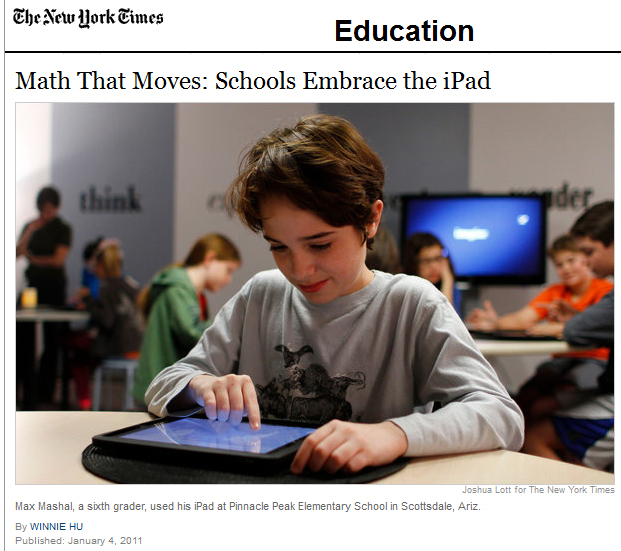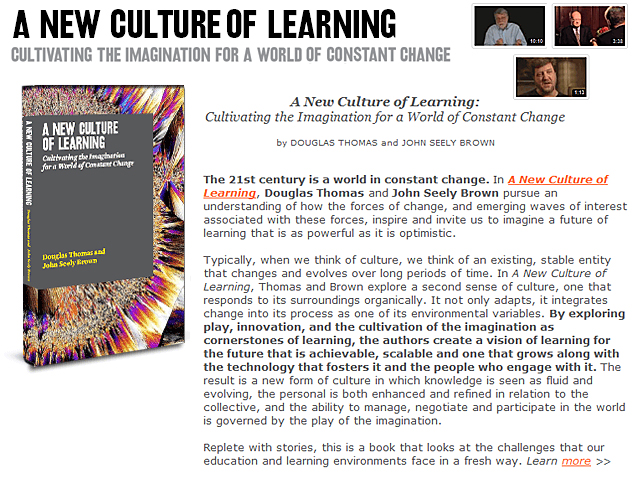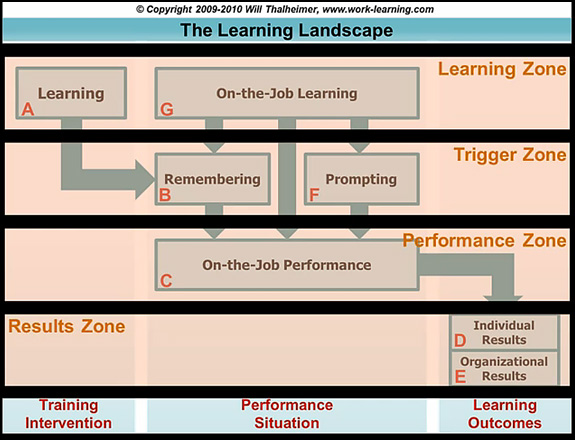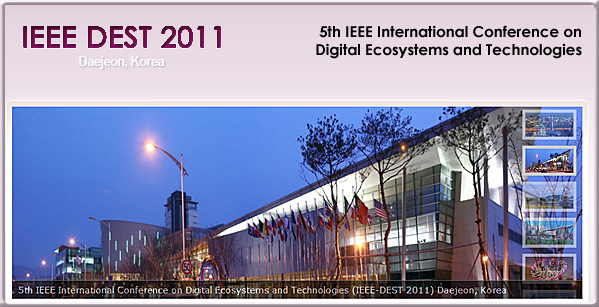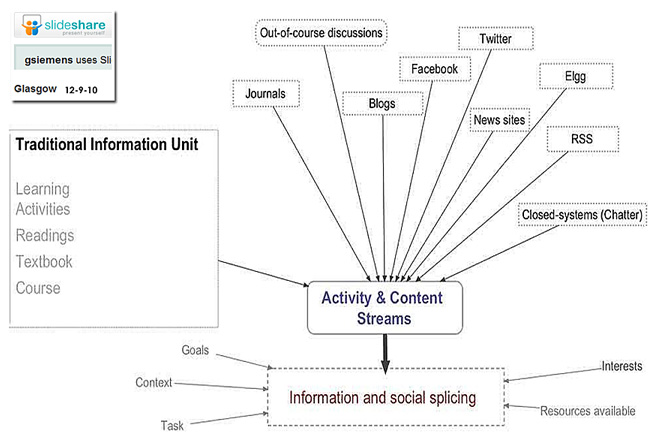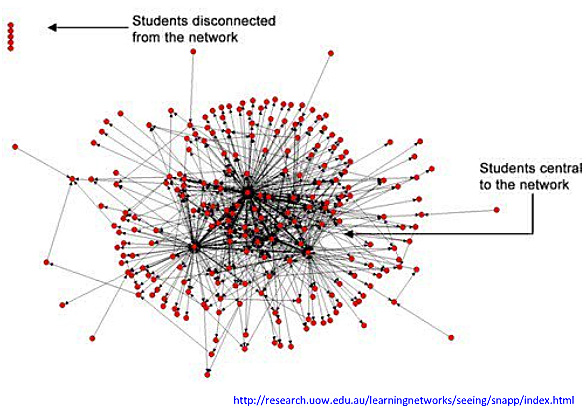The Ultimate Study Guide: Wolfram Alpha Launches “Course Assistant” Apps — from ReadWriteWeb by Audrey Watters
The computational knowledge engine Wolfram|Alpha is launching the first three of a series of new “course assistant” apps today. These apps, available for iPhone, iPod Touch, and iPad, are designed to take advantage of the Wolfram|Alpha technology in the service of supporting some of the most popular courses in high school and college.
The idea is to be able to quickly access the pertinent capabilities of Wolfram|Alpha relevant for specific subject areas. Currently, these subject areas are Algebra, Calculus, and Music Theory. But the company says it plans to add apps for other subjects – “for every major course, from elementary school to graduate school,” – including those fields outside math and science.
From DSC:
Notice the term engine (in bold maroon above). This is the type of sophisticated programming that will increasingly be baked into future learning products — as the software seeks to learn more about each learner while providing each learner with a more customized learning experience…pushing them, but aiming to encourage — not discourage — them. I can see an opt-in program where each of us can build a cloud/web-based learner profile — and allow such an engine to be “fed” that data.
Towards a new-digital learning ecosystem based on autonomic Web services — from IEEEXplore Digital Library (emphasis below from DSC)
Abstract
With the latest advances in information and communication technologies, learners can now engage in continuous and rich learning-sessions that characterize today’s digital learning ecosystems. In these ecosystems, learning resources are pervasive and dynamic. A key challenge is to develop a scalable learning system that addresses the inherent complexity of learning sessions and cater for the specific needs and requirements of individual learners. In this paper, we adopt autonomic Web services to capture disparate learning resources and build an autonomic digital learning ecosystem that reconfigures itself in response to changes in the environment such as learners’ profiles, resource availabilities, and type of instructional material. The use of autonomic Web services permits to abstract the learning resources into distributed and uniformly structured objects and to record learners’ attributes into a packaged profile. These Web services sense the learning context and coach learners in their pursuit of constructive instructional sessions. A service-oriented architecture is proposed to connect learning resources, learners’ profiles, and contextual indicators. A prototype is, also, illustrated in the paper to show the feasibility of the proposed solutions.
Also see:
Learning and the State of Business in 2011 — from Chief Learning Office by Bob Lee
As the pace of business continues to accelerate and mobility within the workforce continues to rise, virtual communication and collaboration in support of learning becomes more and more essential. Blended approaches that combine the best of traditional learning models with online learning are gaining momentum because they help decrease costs and meet the needs of an increasingly dispersed and mobile business workforce. A blended learning approach offers faster and more affordable ways to arm an organization with the knowledge and skills needed to adapt to changes and achieve business goals.
Learning Landscape Model Video — from Will Thalheimer
The Learning Landscape Model is:
…based on the fundamental cognitive architectures of learning, remembering, and prompting as three distinct cognitive operations, all of which are needed to maximize workplace learning-and-performance results. While previous models have often forgotten forgetting or forgotten prompting mechanisms (like job aids), the Learning Landscape is complete. Perhaps more importantly, it is actionable, for example, it can be utilized to have productive discussions between us as learning professionals and our business partners. Finally, the Learning Landscape Model can be used to improve learning measurement significantly over the 4-levels or roi models.
Check out the video of the Learning Landscape Model…
eLearning predictions for 2011 and beyond — from Web Courseworks.com by Jon Aleckson
Excerpts:
This summer I attended the 2010 Distance Teaching and Learning Conference in Madison, Wisconsin. Some very interesting topics came up in the facilitated Think Tanks, and I wanted to share some of the predictions that were developed from these active group discussions regarding where eLearning will go in the next ten years.
…
Below you will find a table that summarizes the different opportunities and challenges that were predicted to arise in the next ten years by the participants in the conference Think Tanks and by [Jon Aleckson].
| Opportunities | Challenges | |
| Learner |
|
|
| K-12 Instruction |
|
|
| Corporate Training |
|
|
| Content |
|
|
| Learning Environment |
|
|
| Faculty |
|
|
| Administration & Management |
|
|
| International Perspectives |
|
|
The Learning Ecosystem — from Chief Learning Officer by Mal Poulin
“Without a sustainable, user-friendly and easily implemented plan to capture and spread information between employees, technology is just hardware and software.”

- Environments, cultures, organizations, and methods that support workplace learning and performance. It’s not about the software; it’s about what they do with it.
- Strategies, processes, and tools to enable learning in every aspect of the business or operation. The goal is to yield front-line performance improvements that result in customers who notice and come back for more products and services.
Note some of the topics in the call for papers/proposals:
- Theoretical Foundations of Digital Ecosystems
- Digital Ecosystems Infrastructures
- Digital Ecosystems Architectures and Semantics
- DomainSpecific Digital Ecosystems
* eResearch Ecosystems and eHumanities
* Digital Media & Entertainment Ecosystems
* E-Education Ecosystems
* Business Ecosystems
* Innovation Region Ecosystems
* Health care Ecosystems
* Social Network Ecosystems
Adaptive and Learning Agents Workshop 2011 [call for proposals]
The topics of interest include but are not limited to:
* Novel combinations of reinforcement and supervised learning approaches
* Integrated learning approaches that work with other agent reasoning modules like negotiation, trust models, coordination, etc.
* Supervised multi-agent learning
* Reinforcement learning (single and multi-agent)
* Planning (single and multi-agent)
* Reasoning (single and multi-agent)
* Distributed learning
* Adaptation and learning in dynamic environments
* Evolution of agents in complex environments
* Co-evolution of agents in a multi-agent setting
* Cooperative exploration and learning to cooperate and collaborate
* Learning trust and reputation
* Communication restrictions and their impact on multi-agent coordination
* Design of reward structure and fitness measures for coordination
* Scaling learning techniques to large systems of learning and adaptive agents
* Emergent behaviour in adaptive multi-agent systems
* Game theoretical analysis of adaptive multi-agent systems
* Neuro-control in multi-agent systems
* Bio-inspired multi-agent systems
* Applications of adaptive and learning agents and multi-agent systems to real world complex systems
* Learning of Co-ordination
Here are a couple of items from David Álvarez regarding his view of a PLE:
http://e-aprendizaje.es/2010/03/09/mi-ple/
…and an animated version can be found at:
http://www.flickr.com/photos/e-aprendizaje/4574226764/
Thanks David,
Daniel









![LearningEcosystemGraphicFromNETP2010 Another nice example/graphic of a learning ecosystem [from National Education Technology Plan 2010]](http://danielschristian.com/learning-ecosystems/wp-content/uploads/2011/01/LearningEcosystemGraphicFromNETP20101.jpg)
